Wednesday 27 February, 2008, 09:49 - Pirate/Clandestine
Posted by Administrator
Posted by Administrator
 It seems as if Ofcom has been up to its tricks again. On February 19th they announced that they had conducted another large-scale raid on London's pirate radio stations similar to one it conducted in 2005, however this time it was in conjunction with the local council authorities whose buildings are often the home of the pirates' transmitters. 22 transmitters were seized and 3 people were arrested.
It seems as if Ofcom has been up to its tricks again. On February 19th they announced that they had conducted another large-scale raid on London's pirate radio stations similar to one it conducted in 2005, however this time it was in conjunction with the local council authorities whose buildings are often the home of the pirates' transmitters. 22 transmitters were seized and 3 people were arrested.I won't repeat the musings I made last time this happened concerning the probability of pirates causing the kind of wide-spread radio interference they are accused of. The latest news release from Ofcom actually plays down the interference aspects compared to their previous press release, and now plays up the difficulties and dangers that councils face due to the damage caused to property when pirates break into buildings to install their equipment. There can be no doubt that such damage does get caused when pirates break into lift-shafts and onto the rooves of blocks of flats which, if anything, only serves to highlight the desperation that such stations face and their determination to bring the kind of music they play to their audiences. Clearly mainstream radio is not catering for a whole swathe of society.
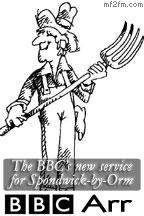 Whether or not they are working in cahoots or not, it seems that the BBC is intent on reducing the number of frequencies which might otherwise be useful to community (or pirate!) radio broadcasting. It has recently expanded coverage of 'Three Counties Radio (3CR) by adding relay stations in East Herts, South Herts and High Wycombe. However unlike the majority of other BBC local radio stations, these relays use frequencies in the bands usually used by the BBC for relays of national radio stations (90.4, 92.1 and 98.0 MHz respectively). Now the BBC are quite at liberty to use their own spectrum as they see fit, but this move away from a logically planned system to something more flexible surely suggests that a similarly flexible approach might be taken on a wider basis to allow for frequencies for more, new, innovative radio stations rather than just repeating existing ones. These three frequencies could have been used for new commercial or community stations in these areas. It's not that BBC coverage did not exist there before, it's just that it wasn't quite as good as the BBC had hoped.
Whether or not they are working in cahoots or not, it seems that the BBC is intent on reducing the number of frequencies which might otherwise be useful to community (or pirate!) radio broadcasting. It has recently expanded coverage of 'Three Counties Radio (3CR) by adding relay stations in East Herts, South Herts and High Wycombe. However unlike the majority of other BBC local radio stations, these relays use frequencies in the bands usually used by the BBC for relays of national radio stations (90.4, 92.1 and 98.0 MHz respectively). Now the BBC are quite at liberty to use their own spectrum as they see fit, but this move away from a logically planned system to something more flexible surely suggests that a similarly flexible approach might be taken on a wider basis to allow for frequencies for more, new, innovative radio stations rather than just repeating existing ones. These three frequencies could have been used for new commercial or community stations in these areas. It's not that BBC coverage did not exist there before, it's just that it wasn't quite as good as the BBC had hoped.I still maintain that it's quite possible that pirate stations can (and do) cause interference to legitimate users of the radio spectrum. It's clear, though, that Ofcom is only making small inroads into solving the problem and that other parties are doing nothing to assist. There has to be a long-term solution to the problem if it is ever to be solved and one commentator has suggested that when radio broadcasters have moved over to digital broadcasting (whether DAB, DRM, or something else), some of the 'digital dividend' that results should be given to low power, lightly licensed, radio broadcasting. Sounds like an eminently good idea to me.
add comment
( 1820 views )
| permalink
| 



 ( 2.9 / 17562 )
( 2.9 / 17562 )




 ( 2.9 / 17562 )
( 2.9 / 17562 )
Friday 8 February, 2008, 19:10 - Licensed
Posted by Administrator
Posted by Administrator
 The Wireless Waffle team used to supply VHF FM radio transmitters for Restricted Service Licence (RSL) stations in the UK. The licences allowed a maximum transmitter power of 25 Watts and a maximum antenna height of 10 metres above the ground. As such, the range of such stations was normally very limited compared to regular FM stations who used powers typically in excess of 400 Watts and with much higher antennas. To maximise the range of the RSLs, it was best to identify and use transmitter sites which were as high above the surrounding land as possible but in some areas the land was so flat that no such sites existed.
The Wireless Waffle team used to supply VHF FM radio transmitters for Restricted Service Licence (RSL) stations in the UK. The licences allowed a maximum transmitter power of 25 Watts and a maximum antenna height of 10 metres above the ground. As such, the range of such stations was normally very limited compared to regular FM stations who used powers typically in excess of 400 Watts and with much higher antennas. To maximise the range of the RSLs, it was best to identify and use transmitter sites which were as high above the surrounding land as possible but in some areas the land was so flat that no such sites existed.One question which was constantly asked by the operators of such stations was, "Should I broadcast in stereo?". On the face of it, stereo is the norm for FM broadcasts and most stations believed that if they weren't in stereo they would be seen somehow as inferior. However, what most failed to take into account was the fact that in order to receive a good quality stereo signal, the signal strength has to be 10 times (20dB) higher than that required to receive a good quality mono signal. This translates into a reduction in coverage area of 100 times, i.e. the coverage in stereo is only a hundredth of the coverage area achieved by the same transmitter in mono (ignoring topographical issues such as terrain and buildings).
Why is there so much difference? The answer lies in the bandwidth which a stereo signal occupies compared to a mono signal. The audio bandwidth of an FM transmission lies in the range of 30 Hz to 15000 Hz (15 kHz). However the way that a stereo signal is generated expands this bandwidth to 53000 Hz (53 kHz). (Don't get this confused with the RF bandwidth of the signal which is 180 kHz for mono and 256 kHz for stereo).
 How does the audio bandwidth extend to 53 kHz? Well the mono signal which is made by adding the left (L) and right (R) channels together - expressed as L+R - is transmitted as usual so that the resulting signal is compatible with mono receivers. The difference between the left and right channel (L-R) is amplitude modulated onto a carrier at 38000 Hz (38kHz). This produces a signal which occupies the audio frequencies from 23 to 53 kHz - above the standard audio range and thus inaudible on a mono receiver.
How does the audio bandwidth extend to 53 kHz? Well the mono signal which is made by adding the left (L) and right (R) channels together - expressed as L+R - is transmitted as usual so that the resulting signal is compatible with mono receivers. The difference between the left and right channel (L-R) is amplitude modulated onto a carrier at 38000 Hz (38kHz). This produces a signal which occupies the audio frequencies from 23 to 53 kHz - above the standard audio range and thus inaudible on a mono receiver.A 'pilot' tone which is a low-level tone at 19000 Hz (19kHz) is also added to this signal and then the whole lot is sent to the FM transmitter. In a stereo receiver the presence of the pilot tone triggers the stereo decoder to recover the original signals. The left channel is reproduced by adding the mono to the stereo difference signal (L+R+L-R=2L) and the right channel is produced by subtracting the difference signal from the mono signal (L+R-(L-R)=L+R-L+R=2R).
The noise received by an FM receiver increases as the square of the bandwidth of the modulated/demodulated signal and as such the increase in noise (i.e. the decrease in signal to noise) for a stereo signal is (53/15)² or 12.5 times. Some of this increase is counterbalanced by 'pre-emphasis' where higher audio frequencies are enhanced before transmission and then reduced at the receiver, reducing the effect of some of the noise. The resulting improvement leaves a difference of the factor of 10 mentioned above.
 The question of whether to broadcast in stereo for a low-power RSL (or indeed a pirate!) FM station is therefore a question of quality and coverage. If you have a high site and can expect that most of the listeners you wish to target will receive a good strong signal, stereo is great. If not (which is usually the case), using mono ensures your coverage is maximised. Of course, in fringe stereo areas where the signal becomes 'hissy' the listeners could always switch to mono, but how many people actually know that this solves the problem, let alone know where the mono/stereo switch on their receiver is?!
The question of whether to broadcast in stereo for a low-power RSL (or indeed a pirate!) FM station is therefore a question of quality and coverage. If you have a high site and can expect that most of the listeners you wish to target will receive a good strong signal, stereo is great. If not (which is usually the case), using mono ensures your coverage is maximised. Of course, in fringe stereo areas where the signal becomes 'hissy' the listeners could always switch to mono, but how many people actually know that this solves the problem, let alone know where the mono/stereo switch on their receiver is?!There are some pirate stations who transmit only the pilot tone so that the stereo 'light' on receivers comes on, which looks nice, but don't actually transmit in stereo. This is the worst possible case, as all it will serve to do is reduce the coverage, without giving any additional benefit to the listeners!
Thursday 31 January, 2008, 20:22 - Amateur Radio
Posted by Administrator
A quick scan of the 430-440 MHz (70cm) amateur band in the UK usually reveals very little, other than the occasional repeater and one or two low-power licence exempt data transmitters (for weather stations and so on). But the other day I stumbled across a number of transmissions in the band which puzzled me.Posted by Administrator
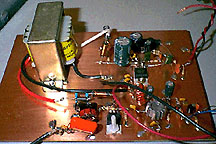 The first of these were foreign voices being transmitted on what was clearly some kind of repeater on a frequency of 430.0375 MHz. This turned out to be an Echolink node near Heathrow Airport in London that was being accessed by some Maltese radio amateurs. OK, so I should have known about this and it's certainly no mystery. But then I heard something similar on 430.0875 MHz and as far as I can make out, there are no Echolink nodes on this frequency in the UK.
The first of these were foreign voices being transmitted on what was clearly some kind of repeater on a frequency of 430.0375 MHz. This turned out to be an Echolink node near Heathrow Airport in London that was being accessed by some Maltese radio amateurs. OK, so I should have known about this and it's certainly no mystery. But then I heard something similar on 430.0875 MHz and as far as I can make out, there are no Echolink nodes on this frequency in the UK.The next signal was encountered when listening to the GB3FN repeater on 433.375 MHz. I kept receiving bad adjacent channel interference. In the end this turned out to be a strong voice transmission on 433.3875 MHz (12.5 kHz up from the repeater output). From my memory of the 433 MHz band in the UK, the Ministry of Defence (MoD)'s MOULD repeater network has outputs that are interleaved between the UK repeater network outputs (a bit of a silly arrangement if you ask me - just asking to be overheard), so this is likely to have been one of these - but could equally be an illegal user making use of amateur equipment with the hope of going unnoticed (in which case it was a bad choice of frequency).
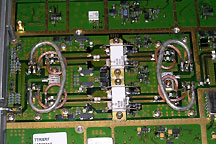 Finally, I have noticed a data carrier on 437.575 MHz which seems to be on-air continuously (at least it's always been there when I've listened). At first I thought this might be a spurious response from some other frequency but checking on a second receiver the signal was there too which pretty much confirms it. This part of the 70cm band is (according to the UK bandplan) assigned for amateur television and satellites. The signal is too fluttery when mobile, and too steady when not, to be a satellite (and anyway the frequency is not listed for any amateur satellites I could find) and is certainly not television. All this means that the things I've heard could be:
Finally, I have noticed a data carrier on 437.575 MHz which seems to be on-air continuously (at least it's always been there when I've listened). At first I thought this might be a spurious response from some other frequency but checking on a second receiver the signal was there too which pretty much confirms it. This part of the 70cm band is (according to the UK bandplan) assigned for amateur television and satellites. The signal is too fluttery when mobile, and too steady when not, to be a satellite (and anyway the frequency is not listed for any amateur satellites I could find) and is certainly not television. All this means that the things I've heard could be:* Perfectly legitimate transmissions from the primary user of the band (the MoD)
* Radio amateurs operating outside the bandplan
* (In the case of the 437 MHz signal) An illegal link set up in the band hoping no-one will notice
The difficulty is that, because radio amateurs are secondary users of 70cm in the UK, it is to be expected that other signals will be found in the band. However, as it would be against the terms of the operating licence to listen to non-amateur transmissions, it is effectively illegal to listen to these signals to try and identify their source - we cannot police our own frequencies.
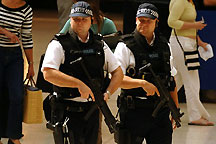 Unless the 'powers that be' (or the primary user) take an active interest in monitoring the band, it is therefore quite possible for illegal usage to go unnoticed and unreported. It is quite likely that if anyone is monitoring they put any anomolies down to radio amateurs.
Unless the 'powers that be' (or the primary user) take an active interest in monitoring the band, it is therefore quite possible for illegal usage to go unnoticed and unreported. It is quite likely that if anyone is monitoring they put any anomolies down to radio amateurs.Now the use of frequencies (430.0875, 433.3875 and 437.5750 MHz) by some other user does not necessarily represent a mass invasion of the band by unwanted types, but it does serve to highlight a problem. The only (legal) recourse to action is to report this usage to Ofcom and let them investigate (though by doing so you would have admitted to having heard them and thus breached your licence already). Which offers up a second problem - if the transmission is found to be legitimate, you have to pay Ofcom for the privelege of them telling you so (at least that seems to be the case - their web-site does not specifically touch the matter as amateur radio is not a business radio user nor is it domestic television or radio reception). Whether Ofcom have a database of MoD usage and thus would be able to dismiss any enquiry rapidly is unclear.
As secondary users, radio amateurs must accept any interference caused by the primary user, and this is an accepted symptom of sharing the band. But does it also mean that we are to suffer interference from potentially unlicensed and illegal users, without any clear method of redress? Or worse, be blamed for such intrusions? It seems this may be the case. For now, I thought the best thing I could do was post the frequencies here and see if it raises any interest from the UK radio amateur community.
Monday 31 December, 2007, 11:01 - Spectrum Management
Posted by Administrator
In a little known, sleepy backwater of the European Commission, moves are afoot to introduce a relatively obscure piece of legislation to allow mobile phones to be used on aircraft. There's nothing newsworthy in this you might think, Ryanair have already announced that they intend to install the equipment to allow their passengers to do just that and Air France have already begun trialling the service.Posted by Administrator
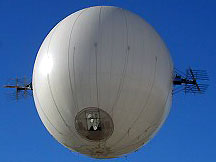 The equipment concerned is basically a GSM base-station (working only in the GSM 1800 frequency band) installed inside the aircraft and connected back to the rest of the world via an external satellite link. However, the function of the equipment goes beyond just the role of making a connection between the mobiles on the plane - it must also stop the mobiles on the aircraft from connnecting with any terrestrial, ground based networks. Why is this important? It's argued that in order to allow mobile communication on aircraft, the power of the mobile transmitters must be kept to an absolute minimum to avoid interference to the avionics on the plane, which is a fairly sensible caveat to put in place. By forcing the phones on the plane to only connect with the on-board base-station their output power can be controlled and minimised, thereby minimising the risks concerned. The power needed for them to connect to a terrestrial network could be relatively high and could thus cause interfere with the avionics (there is some evidence to suggest this can happen) and this is why phones should normally be switched off during the flight (and especially during take-off and landing when pilots rely more heavily on the sensitive equipment in the cockpit).
The equipment concerned is basically a GSM base-station (working only in the GSM 1800 frequency band) installed inside the aircraft and connected back to the rest of the world via an external satellite link. However, the function of the equipment goes beyond just the role of making a connection between the mobiles on the plane - it must also stop the mobiles on the aircraft from connnecting with any terrestrial, ground based networks. Why is this important? It's argued that in order to allow mobile communication on aircraft, the power of the mobile transmitters must be kept to an absolute minimum to avoid interference to the avionics on the plane, which is a fairly sensible caveat to put in place. By forcing the phones on the plane to only connect with the on-board base-station their output power can be controlled and minimised, thereby minimising the risks concerned. The power needed for them to connect to a terrestrial network could be relatively high and could thus cause interfere with the avionics (there is some evidence to suggest this can happen) and this is why phones should normally be switched off during the flight (and especially during take-off and landing when pilots rely more heavily on the sensitive equipment in the cockpit). So how are the on-board base-stations going to stop switched on phones from connecting to terrestrial networks? They are going to emit a jamming signal on all mobile frequency bands to stop terrestrial networks from being received whilst subscribers are sat on the plane. Yes, that's right, a jamming signal. And not just jamming of GSM 1800 but, in order to meet the legislation, they will have to jam all possible mobile bands including 450 MHz (occasionally used in Europe for CDMA-1x), 900 MHz (used for GSM 900) and 2100 MHz (used for WCDMA/3G). As the systems described in the European Commission legislation are for use in European airspace, the jammers will not have to cover 800 MHz or 1900 MHz (used widely in the Americas for CDMA-1x and GSM) or 1500 MHz (used in Japan).
So how are the on-board base-stations going to stop switched on phones from connecting to terrestrial networks? They are going to emit a jamming signal on all mobile frequency bands to stop terrestrial networks from being received whilst subscribers are sat on the plane. Yes, that's right, a jamming signal. And not just jamming of GSM 1800 but, in order to meet the legislation, they will have to jam all possible mobile bands including 450 MHz (occasionally used in Europe for CDMA-1x), 900 MHz (used for GSM 900) and 2100 MHz (used for WCDMA/3G). As the systems described in the European Commission legislation are for use in European airspace, the jammers will not have to cover 800 MHz or 1900 MHz (used widely in the Americas for CDMA-1x and GSM) or 1500 MHz (used in Japan). It's interesting that most mobile operators have raised violent objections to the use of GSM or 3G jammers where these have been used to block mobile communications (in prisons, mosques and theatres for example). It's true that the transmitter power levels at which the jammers will operate are designed such that they will should not, under normal circumstances, affect ground-based users. However it will be interesting to see what happens if:
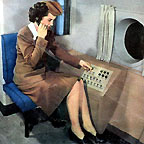
- the on-board base-stations are left on at lower altitudes, or even on the ground, when they will have the potential to cause widespread wipe-outs of nearby mobile phone communications;
- the base-stations enter a fault condition and jam critical aeronautical communications (such as the radars which occupy the frequencies immediately adjacent to the GSM 900 band above 960 MHz);
- European planes leave the equipment switched on whilst traversing Asia or the Americas where the frequencies they are jamming are used for other purposes and thus could cause interference to many other services (such as point-to-point links or emergency communications);
- non-European mobiles (such as those designed for CDMA 1900, CDMA 1700 or one of the Japanese PDC or PHS standards), their users thinking it's now OK to leave their mobiles switched on whilst in flight but which are not blocked by the jammer, log on to terrestrial networks and transmit at higher powers causing interruptions in the functioning of the on-board avionics.

